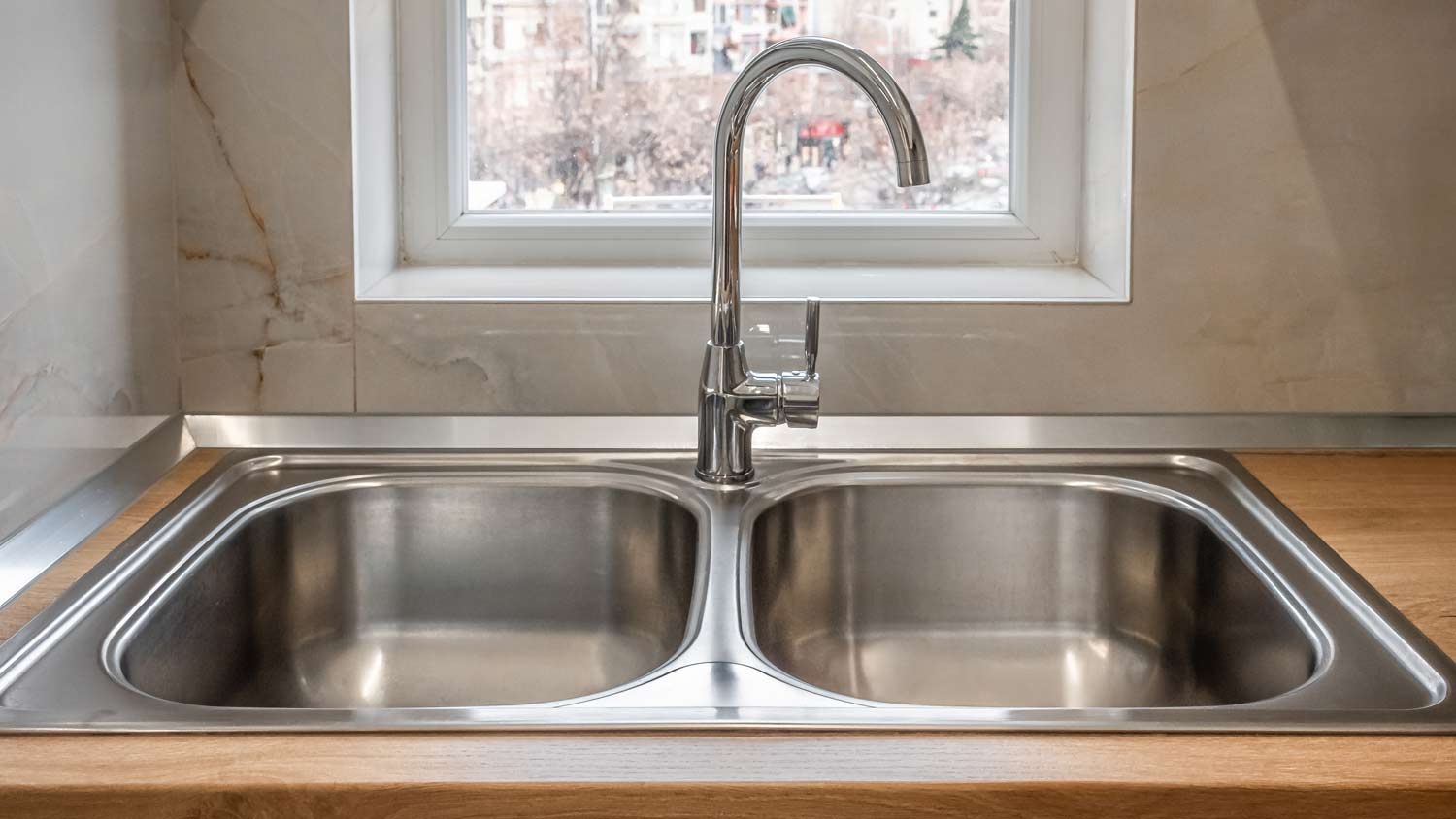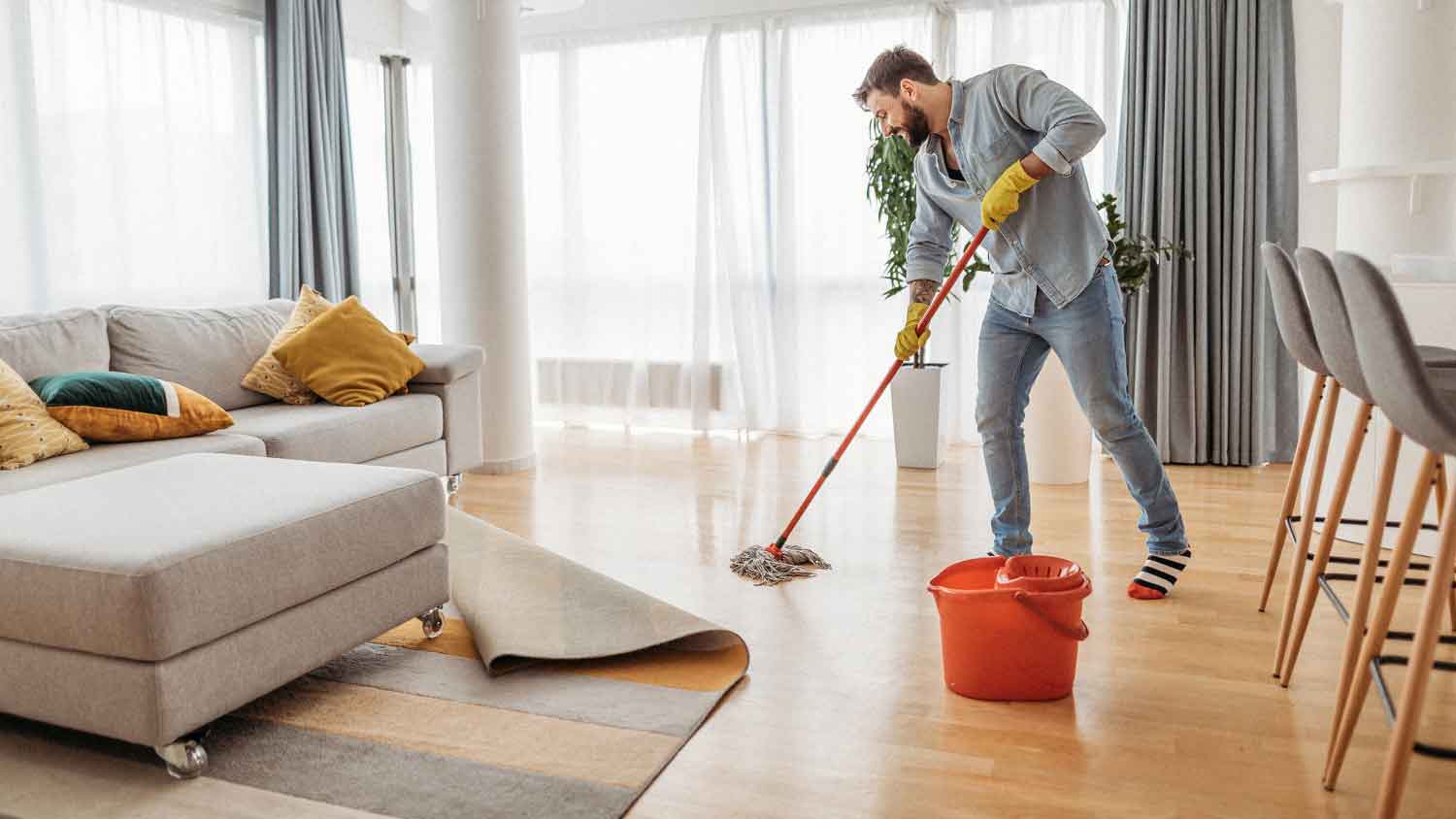How to Remove Grout Haze That Is Clouding Your New Tiles
Grout haze, be gone!


If you have just installed new tiles, you may be faced with an unwelcome side effect—grout haze. Sometimes tiles turn cloudy or hazy within a few days of installation, but don’t panic. Grout haze can be combated if addressed quickly and, in most cases, you won’t have to worry about it again. This guide will walk you through how to remove grout haze and how to prevent it from returning, so that you can spend more time enjoying your new tile.
What Is Grout Haze?
.png?impolicy=infographic)
Grout haze is a film that’s left over from when the grout was installed between the tiles. To grout tile properly, the grout is spread not only in the joints but also across the entire tile to ensure it gets into all of the cracks. The excess is then wiped off of the tiles with a sponge. If the excess grout is not removed completely, it will result in grout haze when it dries.
Signs of Grout Haze and When to Remove It
If your tiles have been in place for a long time and they look hazy, it is more likely soap scum buildup, which consists of hard water mineral deposits mixed with fatty acids, talc, and ingredients from the soap itself. However, if your tiles look cloudy or hazy after installation, it is likely a result of grout haze.
It may take grout haze a few days to reveal itself, but it should be removed as soon as possible after the grout has dried completely (wait at least 24 hours). If grout haze is left for more than 10 days or if it is epoxy-based, it will be more difficult to remove, and you may have to employ the help of stronger cleaners.
How to Remove Grout Haze
To remove grout haze, first gather the supplies you need. If you are removing grout haze shortly after it has dried, you may only need water and a cheesecloth, but you can also use a rubber grout float and have some vinegar on hand in case it proves stubborn.
You can try the following methods to remove grout haze, listed from easiest to more intensive. If the grout haze has been there for more than 10 days or is epoxy-based, you may want to skip the DIY solutions and go straight to professional grout haze remover.
Use Water and a Cloth
In the best-case scenario, you will be able to dip cheesecloth or a terry cloth washcloth into some water, wring it out, and wipe the grout haze from the surface. If the grout is newly dried or not epoxy-based, this method can solve your problem quickly.
Get a Rubber Grout Float Involved
If the water and cloth method does not work, you can use a rubber grout float. This tool is used to install grout and has a squeegee effect that gently scrapes any excess grout from the tiles. Moisten a cloth or tiling sponge to wipe away any excess.
Mix in the Vinegar
For stubborn grout haze on porcelain, vinyl, laminate, or ceramic tiles, you can make a DIY grout haze remover by mixing one part vinegar with four parts water and spray or apply it to the tiles. Wipe away any excess grout and clean the area with water. If you have natural stone tiles like marble or granite, don’t use vinegar because the acid can damage the tiles.
Pick Up a Professional Grout Haze Remover
If the first three methods did not work, the grout may be epoxy-based or just a little extra stubborn. Professional grout haze removers are specially formulated to tackle this problem. Some are made to remove most types of grout, while others target specific kinds, like epoxy-based, or are for use on certain types of tile. Be sure to read the label thoroughly and ask questions at the store, so that you choose the right kind.
Below are some popular grout haze remover brands and the products they offer. Always check the label carefully and look at reviews for products before making a purchase.
Fila: offers cement grout haze remover and epoxy grout haze remover
Aqua Mix: offers cement and non-cement grout haze remover
The Tile Doctor: offers all-purpose grout haze remover
Omni Eliminates: offers epoxy and urethane grout haze remover
How to Prevent Grout Haze

Preventing grout haze can allow you to fully enjoy your newly tiled space faster. The best way to prevent it from happening is to remove as much of the grout from the tiles as possible during installation. Because grout haze consists of mineral deposits left behind when grout is not fully wiped off the newly installed tiles, making sure to clean the tiles fully and wipe away all of the excess grout can reduce the likelihood that grout haze will form.
DIY vs. Hiring a Pro
If you installed the tile yourself, removing grout haze will be up to you unless you choose to hire a grout and tile cleaner near you. The cost to clean grout and tile runs between $300 and $500, but it may be less since grout haze is relatively easy to clean if caught early. If you have a professional install your tile, some will return in a few days to clean the grout haze, while others may not. When you are interviewing contractors, ask if this is included in the installation cost and services. If tile installation is part of a larger renovation and the contractor will be there working on other aspects of the job, they will likely include grout haze cleaning as part of the project and include it in the tile installation cost.
Frequently Asked Questions
If left for more than 10 days, grout haze can become very difficult to remove, and it may never fully disappear. After 10 days, you’ll have to use professional grout haze removers and may even need to call in a professional tile cleaner to attempt to get the job done.
In order to grout the tiles, the grout is spread across the entire surface and then wiped off. It is possible to prevent grout haze to a certain extent by thoroughly wiping the excess grout off of the tiles during installation. Often, professional tile installers can avoid grout haze during the grout process.
No, grout haze will not go away on its own and needs to be removed as soon as possible after installation to preserve the beauty of your new tiles. If left too long, grout haze can leave a permanent film on newly installed tiles, leaving them dull and cloudy.
Grout haze will appear within a few days of tile installation and should be removed as quickly as possible. That said, if caught early, grout haze can be left overnight while you gather supplies or make arrangements for it to be cleaned—but the grout haze will be more difficult to remove the longer it is left.
Yes, grout haze should be removed prior to sealing and the grout should be allowed to dry thoroughly. All grout, except epoxy, should be sealed to protect it from erosion, dirt, and spills. Sealing grout also prevents it from absorbing moisture which can lead to mold and mildew growth.





- How to Soften Grout for Removal 5 Different Ways
- Here's What Causes Loose Grout—and How to Fix It
- How to Keep Your White Grout Clean: 7 Tips to Follow
- How to Clean Floor Tile Grout: A Complete Guide
- How to Change Grout Color
- 3 Tips to Restore Your Grout to Its Original Color
- How to Remove Grout From Tile the Easy Way
- Can You Regrout Over Old Grout? What to Know Before You Start
- How Long Does It Take for Grout to Dry?
- 9 Tips on How to Choose the Right Grout










